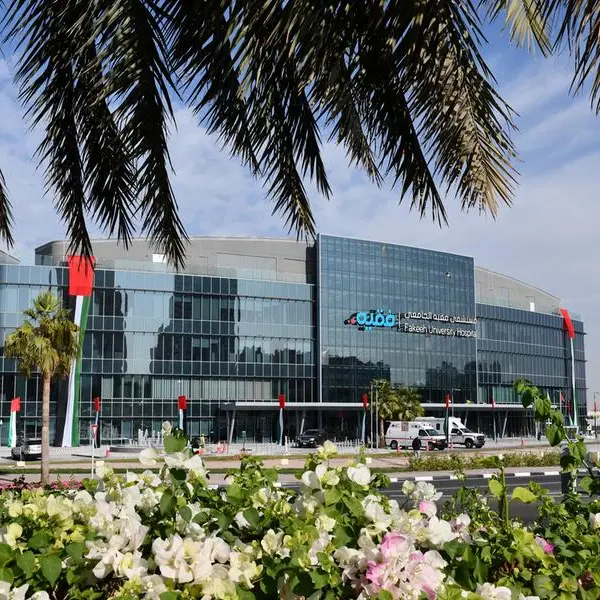PHOTO
Look back through time—there are plenty of examples of businesses that missed out on huge opportunities. Think about when Kodak skipped the digital photography revolution, when Nokia failed to recognise the importance of smartphones, and when Ford got upstaged by General Motors (GM) back in the 1920s.
Now think about why this happened, and you’ll quickly realise that there’s a force at the heart of these crucial errors—research and development (R&D). After all, Kodak had invented digital photography but failed to invest enough in it, Nokia found itself behind the times, and GM simply found new ways to be more productive than the industry leader.
According to a recent Strategy& report, GCC countries can achieve an economic growth rate of 2.2 per cent if they increase R&D spend by 1 per cent . As such, businesses across the region, today are painfully aware of the need to stay at the forefront of innovation, with manufacturers dominating the world of R&D to adjust to new opportunities, to get one step ahead of their competitors, and to build efficiencies into how they work. In fact, according to a recent Deloitte paper exploring exponential technologies in manufacturing, the sector now accounts for 86 per cent of all R&D .
The key is not just to implement R&D but also to use its outputs effectively to develop and grow. With that in mind, let’s take a closer look at the relationship between manufacturers and R&D.
Evolving consumer trends as a driving force for R&D investment
Given that the phrase ‘digital transformation’ was only coined by Capgemini as recently as 2011 , the speed of manufacturing’s R&D uptake is notable. Manufacturers have been prompted to kick-start these ‘digital transformation journeys’ by a need to keep up with equally driven competition, and also to meet rapidly evolving customer expectations.
AI? Robotics? Cyber-physical systems? 3D printing? The rise from dingy and dour, to smart factories as a manufacturing differentiator, is testament to the growing reliance on R&D innovation and the expectations of consumers for such tools to be optimised. Gartner has gone so far as to predict that, by 2022, 40 per cent of all new application development will involve AI co-developers , noting the intrinsic relationship that now exists between the manufacturing industry and R&D.
According to Epicor research, a third of (manufacturing) businesses now utilise AI, robotics, highly automated machines, or advanced waves of technology in their day-to-day operations. This is allowing them to meet demands, reach new audiences, and grow their businesses at a speed that suits them.
The ability to automate tasks—and therefore quicken them with heightened accuracy—can only happen if manufacturers have access to intelligent enterprise resource planning (ERP) software that can orchestrate operations and analyse the crucial data produced by new machines.
The need for R&D is also compounded in the wider context of plugging the overall skills gap. According to the Global Growth Index from Epicor, as many as 78 per cent of manufacturers admit that finding and attracting top talent in the sector is a challenge and, inevitably, technology is going a long way to offset that difficulty.
Ultimately, R&D innovations are facilitating adaptability—and therefore business appeal—at every level. This is due to new multifunctional hardware and machinery, the ability to complement skilled workers on bespoke projects, to analyse market trends, and more. Therefore, the potential that analytics and advanced R&D now holds for business growth in the manufacturing realm is immense.
The chicken or the egg?
A form of ‘chicken and egg’ debate has come to the fore as a result of the growth in popularity of R&D in the manufacturing sector. Are manufacturers already at the forefront of the industry better placed to utilise new technologies? Or are these new technologies propelling manufacturers ahead of the industry curve?
The answer is probably both, in that there is now a direct correlation between tech optimisation and business success. Take Amazon as an example, the company now employs 45,000 robots in its warehouses .Simultaneously, SMEs, across the globe, including here in the Middle East, are also leveraging similar technologies such as robotics, data analytics, AI, additive manufacturing, and cloud-based ERP systems to make their mark in the field, and to expand as a business as quickly and intelligently as possible.
Regardless of company size, stature, or footprint, in the rat race for industry leadership or even survival, local manufacturers are having to, and are now willing to, take leaps of faith and put their trust in new technologies. In a climate where technological processes can often be the differentiator when it comes to end products, manufacturers are often being chosen by business partners and consumers based on this innovative acumen.
By bringing strands of Industry 4.0 into their overall business strategy, manufacturers have realised and can continue to realise an astounding and ongoing digital transformation across factory processes?a digital transformation that doesn’t remove the human brain or work ethic, but that maximises it according to modern day economic strains and market expectations.
With technology, you can streamline your workforce and make them more productive, make your supply chain more effective both pre and post-production or find new markets to enter. You can better monitor consumer trends, or you can simply make operations safer or more secure. Robots can enhance the factory floor, while AI can drive improved decision-making in the boardroom. No matter how it manifests, the important thing is to accept that advanced technologies will help your business grow. In this context, successful R&D will help you lay-out exactly how to make that happen.
About the author
Terri Hiskey is vice president of Product Marketing for Manufacturing at Epicor Software
Copyright 2019 Al Hilal Publishing and Marketing Group Provided by SyndiGate Media Inc. (Syndigate.info).












